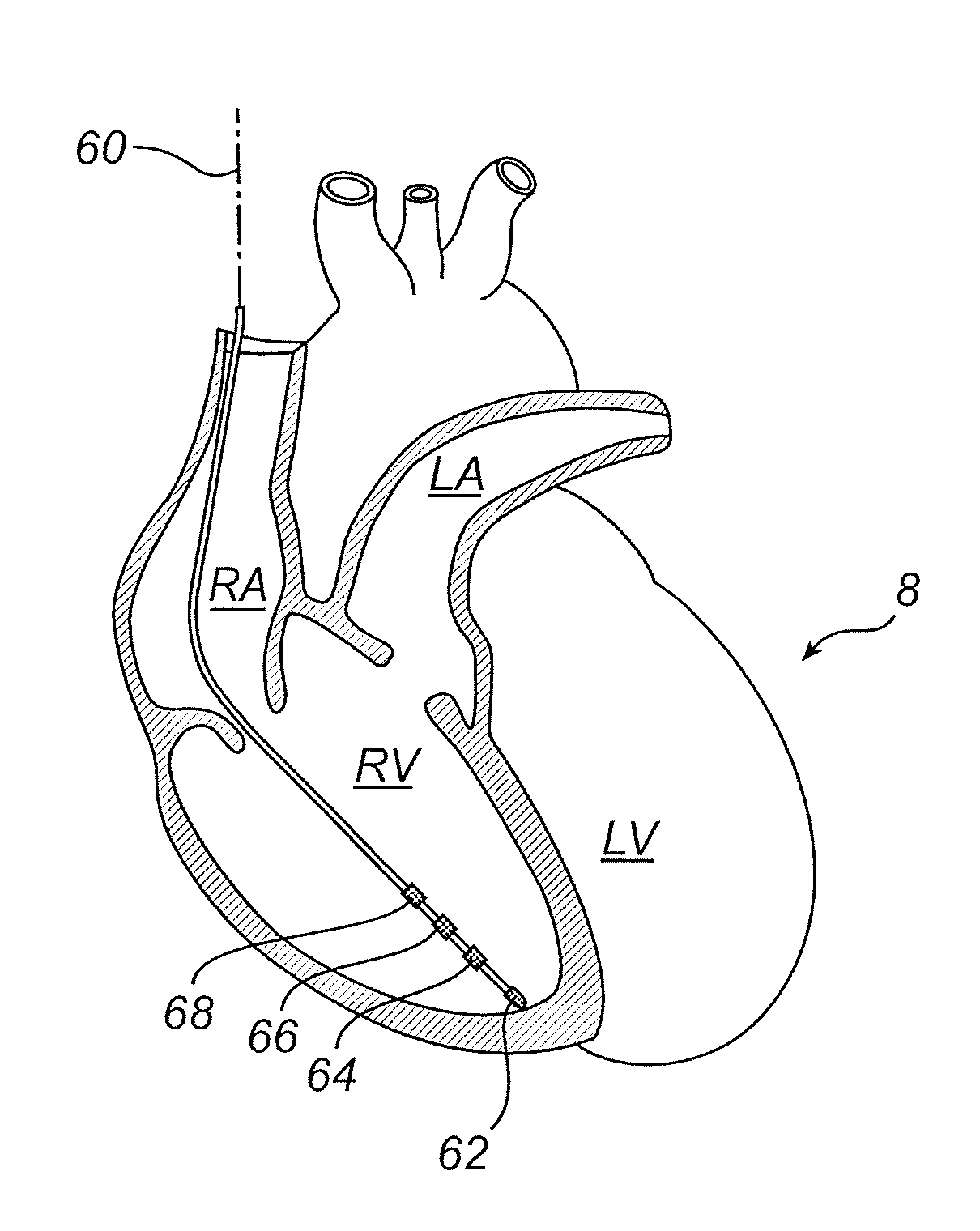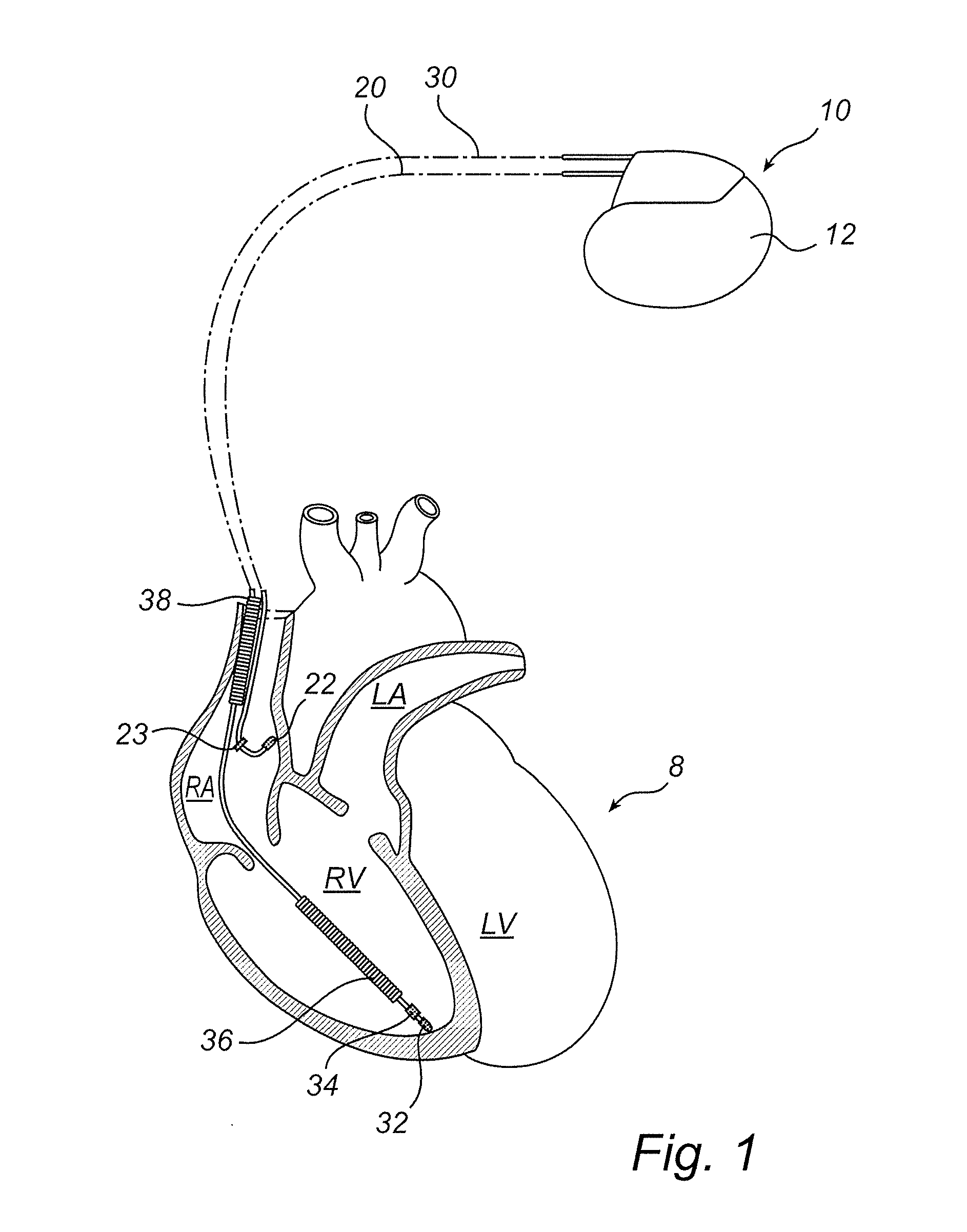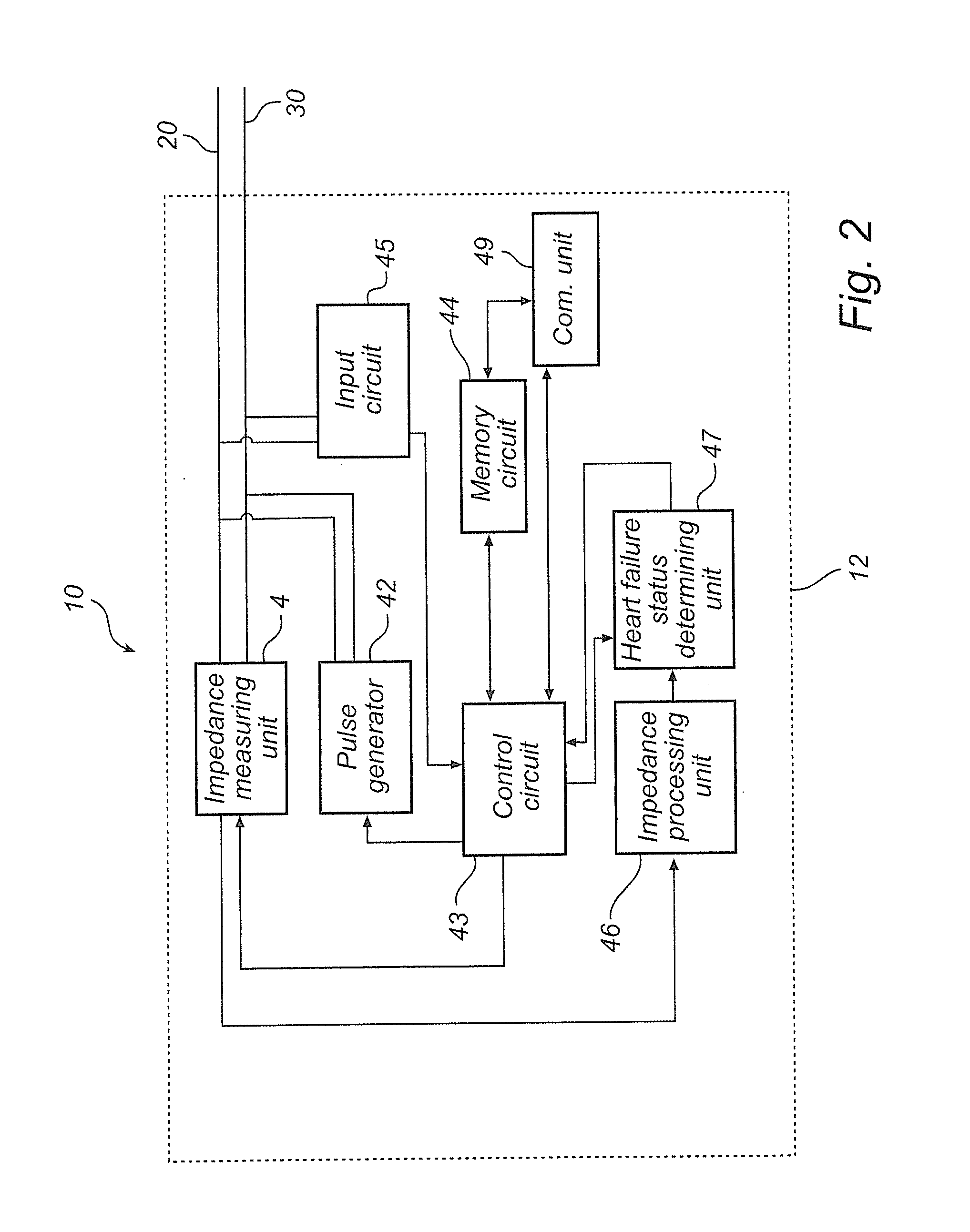Heart failure detector
a detector and heart failure technology, applied in the field of implantable medical devices, can solve the problems of increased filling pressure, decreased ejection fraction, insufficient ejection or blood etc., and achieves the effects of reducing the frequency of cardiac arrest, increasing the filling of the ventricle, and increasing the ejection fraction
- Summary
- Abstract
- Description
- Claims
- Application Information
AI Technical Summary
Benefits of technology
Problems solved by technology
Method used
Image
Examples
Embodiment Construction
[0038]The following is a description of exemplifying embodiments in accordance with the present invention. This description is not to be taken in limiting sense, but is made merely for the purposes of describing the general principles of the invention. Thus, even though particular types of implantable medical devices such as heart stimulators will be described, the invention is also applicable to other types of cardiac stimulators such as dual chamber stimulators, implantable cardioverter defibrillators (ICDs), etc.
[0039]FIG. 1 simplified, schematic diagram illustrating generally one example of an implantable medical device 10 including a heart failure detector in accordance with the present invention and an environment in which it is used, including a heart 8. In this illustrated example, the implantable medical device 10 is an implantable pacemaker and the device 10 is in electrical communication with a patient's heart 8 by way of a right atrial lead 20 having a right atrial (RA) ...
PUM
 Login to View More
Login to View More Abstract
Description
Claims
Application Information
 Login to View More
Login to View More - R&D
- Intellectual Property
- Life Sciences
- Materials
- Tech Scout
- Unparalleled Data Quality
- Higher Quality Content
- 60% Fewer Hallucinations
Browse by: Latest US Patents, China's latest patents, Technical Efficacy Thesaurus, Application Domain, Technology Topic, Popular Technical Reports.
© 2025 PatSnap. All rights reserved.Legal|Privacy policy|Modern Slavery Act Transparency Statement|Sitemap|About US| Contact US: help@patsnap.com



